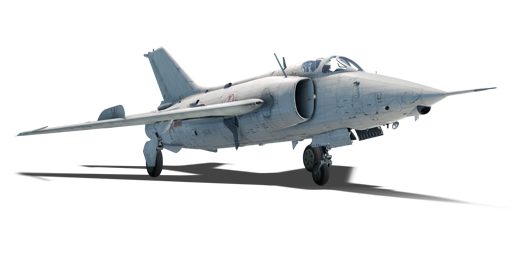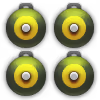



The Q-5L (Chinese: 强-5L型强击机; unified NATO Codename: Fantan) was one of the final versions of the Q-5 family developed in the early 2000s, focusing on improving the electronics for ground-attack capabilities. China had been closely observing the USAF's guided munitions since the Vietnam War, during which their AGM-62 Walleyes performed exceptionally well in attacking critical infrastructure to stall attacks from the Viet Cong. Due to political turmoil, the PLAAF failed to acquire foreign targeting pods, so testing of domestic LGBs and guidance pods began in the 1990s with various prototypes. Although the plan for a 2-plane formation, where one plane would carry bombs and the other a target pod, was abandoned, the new avionics of the Q-5II (Q-5C; suffixed with L when upgraded) and Q-5D (suffixed with N) ensured the capability of the single jet to strike enemies with LGBs. These upgrades became the standard for the Q-5s before their ultimate decommission in the early 2010s.
Introduced in Update "Fire and Ice", the Q-5L has an increased bomb payload and updated avionics such as a new FLIR sensor underneath the nose. However, it is still not any better in air combat than the Q-5A because it lacks air-to-air missiles. Its deficits in air-to-air combat and fragility are compensated for by access to laser-guided bombs and a targeting pod with thermal optics, all at a much lower battle rating than the Jaguar GR.1A or Mirage 2000D-R1. In Ground RB, a well-flown Q-5L can destroy enemy vehicles without much concern for enemy air defenses.
flaps
flaps
flaps
brake
| Belt | Belt filling | Armor penetration (mm) at a distance: | |||||
|---|---|---|---|---|---|---|---|
| 10 m | 100 m | 500 m | 1000 m | 1500 m | 2000 m | ||
| AP-I/HEF-I | 31 | 29 | 20 | 13 | 8 | 6 | |
| HEF-I/AP-I/AP-I/AP-I | 31 | 29 | 20 | 13 | 8 | 6 | |
| HEF-I/HEF-I/HEF-I/AP-I | 31 | 29 | 20 | 13 | 8 | 6 | |
| AP-I | 31 | 29 | 20 | 13 | 8 | 6 | |
| Name | Weight | Slot | ||||||
|---|---|---|---|---|---|---|---|---|
| 216.5 kg |  |  |  |  | ||||
| 240 kg |  |  |  |  | ||||
| 135 kg |  |  |  |  | ||||
| 7 × | 102.2 kg |  |  |  |  | |||
| 4 × | 235.3 kg |  |  |  |  | |||
| 260 kg |  |  | ||||||
| 570 kg |  |  | ||||||
| 469 kg |  |  | ||||||
| 508.3 kg |  |  | ||||||
| K/PZS-01 targeting pod | 20 kg |  | ||||||
| 4 × | 866 kg |  | ||||||
| 4 × | 960 kg |  | ||||||
| 4 × | 540 kg |  | ||||||












Flight performance | ||
|---|---|---|
Survivability |
|---|
Weaponry | |||
|---|---|---|---|
